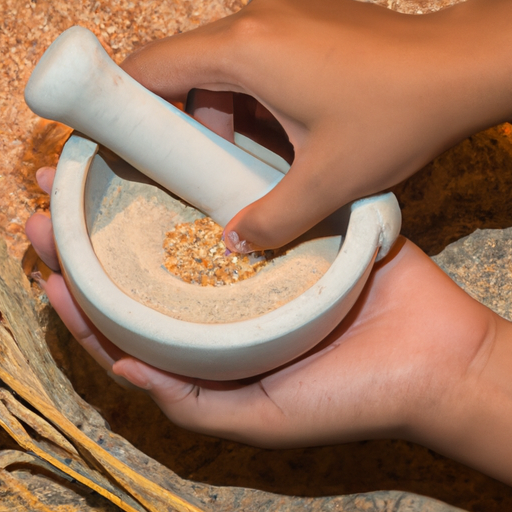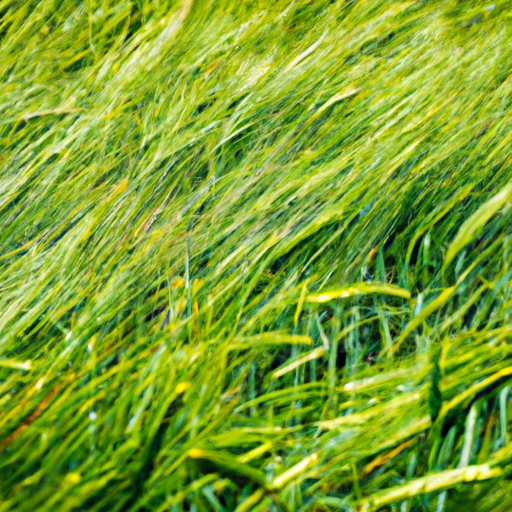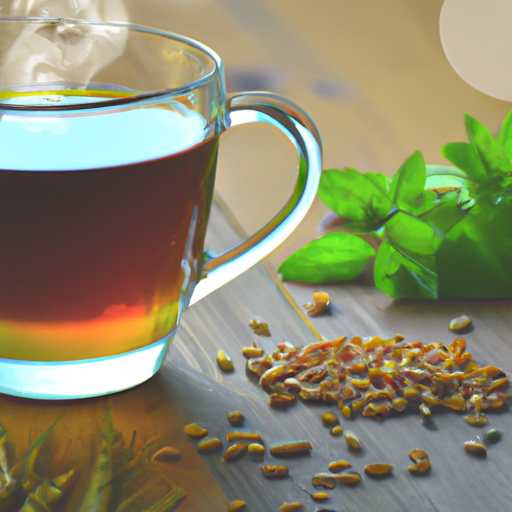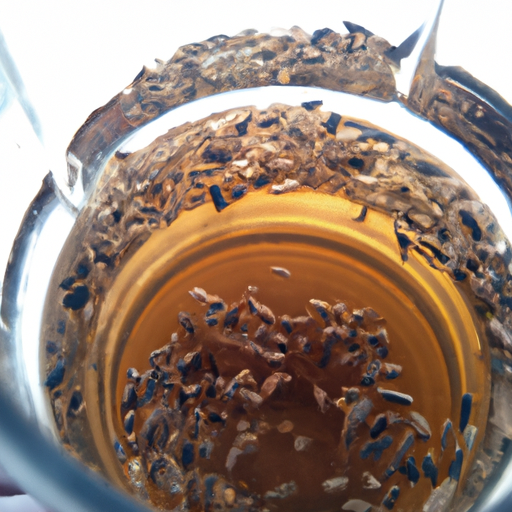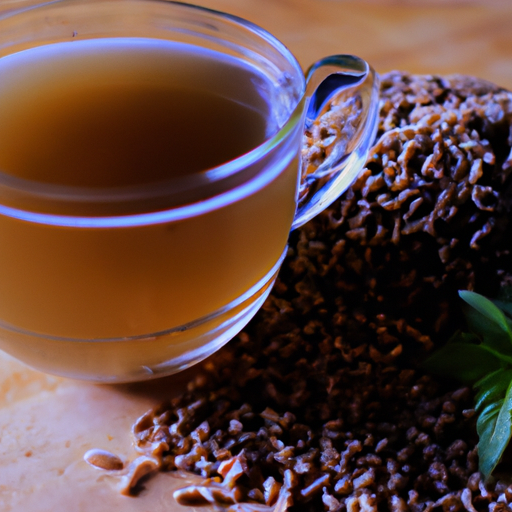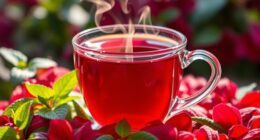Are you into barley tea? Have you sampled various off-the-shelf brands to discover the one you like best? Yet, have you ever thought about grinding your own barley to make tea?
Sure, it might seem like an unnecessary hassle at first glance, but trust me, once you taste the delicious flavor and experience the unique benefits of freshly ground barley tea, you’ll never go back.
Grinding your own barley allows you to control the quality and freshness of your tea. Plus, it’s just plain satisfying to take something as simple as a grain of barley and turn it into a flavorful beverage.
In this article, I’ll guide you through the process of grinding barley for tea and share some tips on how to make the most out of this underrated drink.
So let’s get started!
Key Takeaways
- Homemade barley tea is free from preservatives and artificial flavors
- Choosing the right type of barley and roasting it enhances natural flavors and gives a nutty aftertaste
- Consistency in grinding is important for maximum flavor extraction, and sifting ground barley through a fine mesh strainer can help achieve consistency
- Storing ground barley tea in an airtight container away from moisture and light can help retain freshness, and it can also be used in baked goods and as a base for soups and stews.
The Benefits of Grinding Barley Tea Yourself
Grinding your own barley tea not only saves money, but it also offers numerous benefits. Homemade barley tea is free from preservatives and artificial flavors that are often found in store-bought varieties. This means that you can enjoy a cup of wholesome goodness while avoiding the harmful chemicals present in other teas.
In addition to being healthier, homemade barley tea is also packed with health benefits. It’s an excellent source of antioxidants, which help to reduce inflammation and prevent chronic diseases such as cancer and heart disease. Drinking barley tea regularly can also help to improve digestion, boost the immune system, and lower cholesterol levels.
Overall, grinding your own barley tea provides many benefits that go beyond just cost savings. By making your own tea at home, you can ensure that you’re consuming a healthy beverage without any unwanted additives or chemicals. So why not give it a try? With just a few simple tools needed for grinding barley tea, you’ll be on your way to enjoying all of its delicious and nutritious benefits!
Tools Needed for Grinding Barley Tea
You’ll need a few essential tools to make the perfect cup of this comforting beverage. Grinding barley tea is a simple process, but it requires some preparation and the right equipment. Here are the tools you’ll need:
| Tools | Description |
|---|---|
| Mortar and Pestle | A set of two tools used for crushing and grinding substances into powder or paste. Available in ceramic, stone, or metal materials. |
| Coffee Grinder | An electrical appliance that grinds coffee beans into a fine powder, also suitable for grinding grains like barley. Available in blade or burr types. |
| Food Processor | An electric kitchen appliance designed to chop, blend, puree, or grind food ingredients quickly and efficiently. Comes with different blades for different textures. |
Choosing the right tools for grinding barley tea has many benefits beyond convenience: it allows you to control the texture and quality of your tea by adjusting the coarseness of the grind; it saves money by buying whole barley instead of pre-ground tea bags; and it enhances the flavor and aroma of your tea by preserving its natural oils and nutrients.
Now that you know what tools are required for grinding barley tea at home let’s move on to choosing the right type of barley for your recipe – one that will give you optimal taste, texture, nutritional value, and brewing time.
Choosing the Right Type of Barley for Grinding
As you journey through the vast fields of grain, seeking the perfect ingredient for your comforting brew, consider which type of barley will best suit your taste buds and nourish your body.
There are various types of barley available in the market, each with its unique flavor profile and nutritional value. If you’re looking for a more traditional taste, opt for hulled barley, which is minimally processed and retains most of its nutrients. On the other hand, pearled barley has its outer husk removed, making it easier to cook but lesser in nutrients.
When choosing the right type of barley for grinding, keep in mind that different brewing methods require different types of grains. For instance, if you prefer a stronger tea flavor with a robust aroma and taste, go for roasted barley. Roasting enhances the natural flavors of the grain while giving it a slightly nutty aftertaste that complements any tea blend. However, if you want to keep it simple and light without compromising on health benefits, choose unroasted or raw barley.
Selecting the perfect type of barley is crucial when grinding it into tea. The choice ultimately depends on personal preference; however, keeping in mind what kind of flavor profile suits your taste buds can make all the difference. With this knowledge at hand, let’s now delve into roasting techniques that complement well with our chosen variety.
Roasting Barley for Grinding
Picture yourself in a cozy kitchen, with the aroma of freshly roasted barley wafting through the air. Roasting is an essential step in creating flavorful barley tea.
There are several roasting techniques that can be used, including oven roasting and pan roasting. Oven roasting involves spreading out the barley on a baking sheet and placing it in a preheated oven at 350 degrees Fahrenheit for about 15-20 minutes. This method produces an even roast and gives the barley a nutty flavor profile.
On the other hand, pan roasting involves heating up a skillet over medium heat and adding the barley to it. Stirring constantly, roast until evenly browned to achieve a more caramelized flavor profile.
Once you have decided on your preferred roasting technique, let the roasted barley cool before moving on to preparing it for grinding. With its rich aroma and enhanced flavor profile, your roasted barley is now ready to take center stage in your delicious cup of tea!
Preparing the Barley for Grinding
After the barley has cooled down, it’s time to break it down into smaller pieces that will release its full potential in your brew. To do this, I like to use a mortar and pestle or a coffee grinder. Both methods work well, but if you’re using a coffee grinder, make sure it’s clean and free of any coffee residue before grinding the barley.
Before grinding the barley, it’s important to prepare it properly. One technique is soaking the barley in water for a few hours or overnight. Soaking helps soften the grains and makes them easier to grind into fine pieces. Alternatively, you can also roast the soaked grains in an oven on low heat until they are dry before grinding them.
Aside from making tea, there are other alternative uses for ground barley such as adding it to baked goods like bread or muffins for added texture and flavor. You can also mix ground barley with other herbs and spices to create your own unique blend of tea or use it as a base for soups and stews. Now that we have prepared our barley by soaking or roasting, we’re ready to move onto the next step – grinding!
Grinding the Barley
Once the soaked or roasted barley has been properly prepared, it’s time to use a blender, hand mill or mortar and pestle to grind the grains. While all three methods can be effective, each has its own advantages and disadvantages.
Using a blender is quick and efficient, but can lead to an inconsistent grind. A hand mill allows for greater control over the consistency of the grind, but requires more time and effort. A mortar and pestle may take even longer than a hand mill, but provides the most control over the final texture.
When grinding barley for tea, it’s important to achieve a consistent grind in order to extract maximum flavor from each grain. One tip for achieving this is to pulse your grinder rather than running it continuously; this will help prevent overheating that can cause uneven grinding.
Another way to ensure consistency is by sifting your ground barley through a fine mesh strainer after grinding; any larger pieces left behind can be reground until they reach the desired size.
Now that you’ve successfully ground your barley into small pieces perfect for tea-making, it’s important to store them properly in an airtight container away from moisture and light. This will help retain their freshness and ensure that your next cup of barley tea is just as delicious as the first.
Storing Ground Barley Tea
To keep your freshly ground barley tea flavorful and fresh, it’s important to store it properly. The best way to do this is by using an airtight container that is kept away from moisture and light.
Barley tea can lose its flavor quickly if not stored correctly, so be sure to take the necessary precautions. Proper storage can greatly affect the shelf life of your barley tea.
If you plan on storing your ground barley for an extended period of time, consider placing it in the refrigerator or freezer to help preserve its freshness. This will ensure that when you’re ready to make some delicious barley tea, you’ll have fresh ingredients ready to go.
In the next section, we’ll discuss how to make barley tea with your freshly ground barley. By following these simple steps, you’ll be able to enjoy a refreshing cup of homemade barley tea in no time!
Making Barley Tea with Ground Barley
Now that we know how to store our ground barley tea properly, let’s move on to the next step: making the tea.
There are many variations of barley tea, but I prefer the traditional Korean style. To make it, simply add three tablespoons of ground barley to a pot with six cups of water and bring it to a boil. Then, lower the heat and let it simmer for about 15 minutes.
Drinking barley tea has many health benefits. It’s known to aid in digestion, promote healthy blood sugar levels, and even help with weight loss. Plus, it’s caffeine-free so you can enjoy it any time of day without worrying about disrupting your sleep schedule.
Before moving onto the next section about adding flavors to barley tea, it’s important to note that you can adjust the strength of your tea by adding more or less ground barley or by steeping for longer or shorter periods of time.
Now that we’ve covered the basics of making this delicious and healthy beverage, let’s explore some ways to add even more flavor!
Adding Flavors to Barley Tea
Enhance your barley tea experience with a burst of flavor that’ll leave you feeling refreshed and satisfied. Here are four ways to add flavor to your barley tea:
-
Lemon: Adding lemon to your barley tea is an excellent way to brighten up the taste and aroma of the drink. Squeeze some fresh lemon juice into your cup or brew the tea with slices of lemon.
-
Mint: The combination of mint and barley creates a refreshing and invigorating drink that’s perfect for hot summer days. Add a few sprigs of fresh mint leaves to your brewed barley tea.
-
Ginger: Brewed with ginger, barley tea has a spicy kick that can help soothe nausea and indigestion. Simply grate some fresh ginger root into your teapot when steeping the tea.
-
Honey: For those who’ve a sweet tooth, adding honey can make their cup of barley tea even more enjoyable. Drizzle some honey over it while it’s still warm or stir in some honey after brewing.
Experimenting with different flavor combinations is always fun, but it’s important to note that not all flavors may complement each other well in this context. It’s best to stick with tried-and-tested recipes or experiment gradually until you find a perfect match for your taste buds! Furthermore, adjusting brewing methods such as water temperature can also affect the final flavor profile of your cuppa!
Frequently Asked Questions
How long does it take to grind barley tea?
When it comes to grinding barley tea, the time it takes can vary depending on the method you choose. Grinding techniques range from using a mortar and pestle to using an electric grinder. Personally, I prefer to use an electric grinder for efficiency. It only takes me about 2-3 minutes to grind enough barley tea for a few cups.
However, it’s important to note that optimal brewing time varies based on personal preference. Some may prefer a stronger brew and therefore would need more time, while others may prefer a lighter taste and require less brewing time. Experimentation is key in finding the perfect balance of grinding and brewing for your taste buds!
Can you use a blender to grind barley tea?
Yes, you can use a blender to grind barley tea. However, it’s important to note that the texture and consistency of the ground barley tea may not be as even as when using hand grinding techniques.
When using a blender, make sure to pulse in short bursts rather than continuously blending to prevent overheating and altering the flavor of the tea. Additionally, clean your blender thoroughly before and after use to avoid any cross-contamination with other ingredients or flavors.
Overall, while it’s possible to use a blender for grinding barley tea, hand grinding techniques may provide a more consistent and traditional result.
Does the flavor of barley tea change depending on the type of barley used?
As a tea enthusiast, I can confidently say that the flavor of barley tea does vary depending on the type of barley used. Some popular types include roasted barley, pearl barley, and hull-less barley. Each has its unique taste profile and aroma.
Roasted barley has a nutty and smoky flavor while pearl barley is milder with a slightly sweet taste. Hull-less barley is earthy with a robust flavor. In addition to its delicious taste, drinking barley tea benefits the body in several ways.
It’s known for its hydrating properties, ability to improve digestion, detoxify the liver, lower cholesterol levels, and enhance blood circulation. There are different ways to prepare barley tea such as boiling it in water or steeping it overnight in cold water for a refreshing iced drink during hot weather.
Overall, incorporating this nutritious beverage into your routine is an excellent way to reap its numerous health benefits while enjoying its diverse flavors and aromas.
Can you grind barley tea without roasting it first?
Yes, it’s possible to grind barley tea without roasting it first. However, the flavor profile may differ compared to when using roasted barley. The grinding technique will also affect the texture and consistency of the tea.
Some alternative ingredients that can be used in place of barley include roasted corn or brown rice. It’s important to experiment with different techniques and ingredients to find what works best for personal taste preferences.
Additionally, it’s recommended to use a high-quality grinder specifically designed for grains to ensure consistent results.
Can you reuse the ground barley tea for multiple cups of tea?
Yes, you can definitely reuse the ground barley tea for multiple cups of tea! I always make sure to save my leftover barley tea grounds in an airtight container and use them again within a day or two.
They may not be as strong as the first brew, but they still have plenty of flavor and nutrients left. Plus, there are plenty of creative recipes you can make with the leftover grounds, such as adding them to smoothies or baked goods for an extra boost of fiber and protein.
Don’t let those precious barley tea grounds go to waste – get creative with how you use them!
Conclusion
Well, folks, we’ve reached the end of our journey on how to grind barley tea. I hope you’re all feeling as exhilarated and accomplished as I am after going through this process.
Grinding your own barley tea not only allows for a fresher and more flavorful cup, but it also gives you an opportunity to flex your DIY muscles. Now, when someone asks me how I like my tea, I can confidently reply ‘grounded.’ The sound of the grinder whirring away in my kitchen has become music to my ears.
And let’s not forget the smell of freshly roasted barley wafting through the air – it’s like heaven in a mug. So go ahead and give grinding your own barley tea a try. It may take some time and effort, but trust me, the end result is worth it.
Just don’t be surprised if you find yourself proudly showing off your homemade brew to anyone who will listen – because once you’ve gone ground, there’s no going back!

